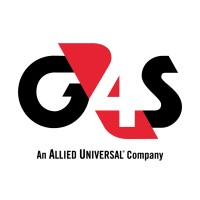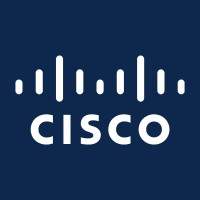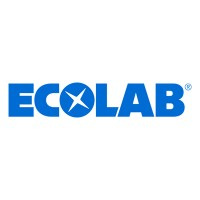Electronic Systems Product Engineer
Cummins Inc.
Date: 9 hours ago
City: Pune, Maharashtra
Contract type: Intern

Description
GPP Database Link (https://cummins365.sharepoint.com/sites/CS38534/)
Job Summary
This entry level/early career professional, product focused position tailors electronic and electrical systems for Cummins products. People in these positions will translate product requirements into hardware and software technical requirements that control the operation of Cummins’ products in a variety of customer applications. Additionally, there is responsibility to configure (tune), and complete comprehensive validation testing of the fully integrated hardware and software systems.
Key Responsibilities
Investigates electronic application and systems problems, understands causal mechanisms, recommends appropriate action, owns problem resolution and documents results with guidance from more experienced team members. Applies and supports the improvement of electronic application and systems development processes and tools. Processes include system specification, modeling and simulation, calibration, Design Verification Plan and Report (DVP&R), and troubleshooting. Application of tools for simulation, calibration, and product life maintenance required. Obtains input from customers, technical and product teams, manufacturing engineers, supplier partners, and other stakeholders to deliver information and recommendations that lead to quality product decisions. Makes decisions in the areas of electronic and electrical system design, requirements, calibration, and test that impact the quality and performance of individual calibrated features and/or components. Owns problem resolution for moderately complex components, products, systems, subsystems or services with technical complexity and ambiguity increasing as experience is gained in the role. Provides independent execution of established work processes and systems, while still developing technology or product knowledge; engages with the improvement of systems and processes. Involves no direct management of people but could involve the coordination and direction of work amongst technicians and/or temporary student employees. Contributes effectively toward team goals, exhibits influence within a work group and continues to develop proficiency in the competency areas critical to success in the role.
Responsibilities
Competencies:
Design and Application of Mechatronics Systems - Specifies electronic hardware and interconnections that measure and control systems; applies electronic hardware and interconnections in Cummins' products.
Machine Integration and Optimization - Combines various parts or sub-systems into a whole to achieve the output most desired by the customer; applies Cummins' installation requirements using our standard tools, processes and identified best practices to ensure optimization of performance, reliability, cost and quality; analyzes technical issues using proven problem-solving and troubleshooting techniques for rapid resolution.
Product Failure Mode Avoidance - Mitigates potential product failure modes, by identifying interfaces, functions, functional requirements, interactions, control factors, noise factors, and prioritized potential failure modes and potential failure causes for the system of interest to effectively and efficiently improve the reliability of Cummins’ products.
Product Function Modeling, Simulation and Analysis - Impacts product design decisions through the utilization and/or interpretation of computational tools and methods that predict the capability of a product's function relative to its system, sub-system and/or component level requirements.
Product Problem Solving - Solves product problems using a process that protects the customer; determines the assignable cause; implements robust, data-based solutions; and identifies the systemic root causes and recommended actions to prevent problem reoccurrence.
Product Verification and Validation Management - Develops product systems validation plans from a variety of inputs to identify failure modes, while managing product risk and relative priority; negotiates product requirements against capability to guide project scope; evaluates analytical, simulation and physical test results to verify product capability and validate requirements; assesses legacy versus proposed system solution capabilities and produces recommendations with technical documentation to support product decisions.
System Requirements Engineering - Uses appropriate methods and tools to translate stakeholder needs into verifiable requirements to which designs are developed; establishes acceptance criteria for the system of interest through analysis, allocation and negotiation; tracks the status of requirements throughout the system lifecycle; assesses the impact of changes to system requirements on project scope, schedule, and resources; creates and maintains information linkages to related artifacts.
Systems Thinking - Defines the system of interest by drawing the boundaries, identifying its context within its environment, its interfaces, and that it has a lifecycle to aid in planning the problem statement, scope and deliverables ; analyzes linkages and interactions between elements that comprise the system of interest by using appropriate methods, models and integration of outcomes to understand the system, predict its behavior and devise modifications to it in order to produce the desired effects.
Collaborates - Building partnerships and working collaboratively with others to meet shared objectives.
Communicates effectively - Developing and delivering multi-mode communications that convey a clear understanding of the unique needs of different audiences.
Decision quality - Making good and timely decisions that keep the organization moving forward.
Drives results - Consistently achieving results, even under tough circumstances.
Self-development - Actively seeking new ways to grow and be challenged using both formal and informal development channels.
Values differences - Recognizing the value that different perspectives and cultures bring to an organization.
Applies Principles of Statistical Methods - Analyzes technical data using descriptive statistics, probability distributions, graphical analysis, and statistical inference (population and sample, confidence intervals, and hypothesis testing); models relationships between response and independent variables using analysis of variance, regression, and design of experiments to make rigorous, data-based decisions.
Cross-Functional Design Integration - Translates the value package requirements that include the voices of many stakeholders into virtual designs, and communicates the capability of the design through an approved cross-functional design review.
Technical Documentation - Documents information based on knowledge gained as part of technical function activities; communicates to stakeholders with the goal of enabling improved technical productivity and effective knowledge transfer to others who were not originally part of the initial learning.
Product Development Execution, Monitoring and Control - Plans, schedules, coordinates and executes the activities involved in developing a product to a respectively aligned hierarchy of requirements and technical profiles; monitors and communicates across functional boundaries to meet project resource and quality expectations; ensures product capability meets or exceeds expectations and takes mitigating actions when project risks are higher than expected; understands the full product life cycle process and stakeholders.
Design and Application of Open/Closed Loop Controls - Specifies software features that interact with mechanical, hydraulic, chemical and electronic systems to deliver desired system states; specifies control system architectures which include appropriate measurements, correct actuation, and algorithms for Cummins' products; configures and/or understands open/closed loop feedback controls features and the system interactions between hardware and software in Cummins' products.
Education, Licenses, Certifications
College, university, or equivalent Bachelor's degree in Engineering or appropriate STEM field is required.
Post-graduate (Master's) degree relevant to this discipline area may be required for select roles.
This position may require licensing for compliance with export controls or sanctions regulations.
Experience
Entry level/Early career professional. Preferred candidates would have relevant experience working in either a temporary student employment environment (intern, co-op, or other extracurricular team activities) or as an early career professional in a relevant technical discipline area. Knowledge of MS Office tools is also preferred
Qualifications
Core Responsibilities:
Job Engineering
Organization Cummins Inc.
Role Category Hybrid
Job Type Exempt - Experienced
ReqID 2406056
Relocation Package Yes
GPP Database Link (https://cummins365.sharepoint.com/sites/CS38534/)
Job Summary
This entry level/early career professional, product focused position tailors electronic and electrical systems for Cummins products. People in these positions will translate product requirements into hardware and software technical requirements that control the operation of Cummins’ products in a variety of customer applications. Additionally, there is responsibility to configure (tune), and complete comprehensive validation testing of the fully integrated hardware and software systems.
Key Responsibilities
Investigates electronic application and systems problems, understands causal mechanisms, recommends appropriate action, owns problem resolution and documents results with guidance from more experienced team members. Applies and supports the improvement of electronic application and systems development processes and tools. Processes include system specification, modeling and simulation, calibration, Design Verification Plan and Report (DVP&R), and troubleshooting. Application of tools for simulation, calibration, and product life maintenance required. Obtains input from customers, technical and product teams, manufacturing engineers, supplier partners, and other stakeholders to deliver information and recommendations that lead to quality product decisions. Makes decisions in the areas of electronic and electrical system design, requirements, calibration, and test that impact the quality and performance of individual calibrated features and/or components. Owns problem resolution for moderately complex components, products, systems, subsystems or services with technical complexity and ambiguity increasing as experience is gained in the role. Provides independent execution of established work processes and systems, while still developing technology or product knowledge; engages with the improvement of systems and processes. Involves no direct management of people but could involve the coordination and direction of work amongst technicians and/or temporary student employees. Contributes effectively toward team goals, exhibits influence within a work group and continues to develop proficiency in the competency areas critical to success in the role.
Responsibilities
Competencies:
Design and Application of Mechatronics Systems - Specifies electronic hardware and interconnections that measure and control systems; applies electronic hardware and interconnections in Cummins' products.
Machine Integration and Optimization - Combines various parts or sub-systems into a whole to achieve the output most desired by the customer; applies Cummins' installation requirements using our standard tools, processes and identified best practices to ensure optimization of performance, reliability, cost and quality; analyzes technical issues using proven problem-solving and troubleshooting techniques for rapid resolution.
Product Failure Mode Avoidance - Mitigates potential product failure modes, by identifying interfaces, functions, functional requirements, interactions, control factors, noise factors, and prioritized potential failure modes and potential failure causes for the system of interest to effectively and efficiently improve the reliability of Cummins’ products.
Product Function Modeling, Simulation and Analysis - Impacts product design decisions through the utilization and/or interpretation of computational tools and methods that predict the capability of a product's function relative to its system, sub-system and/or component level requirements.
Product Problem Solving - Solves product problems using a process that protects the customer; determines the assignable cause; implements robust, data-based solutions; and identifies the systemic root causes and recommended actions to prevent problem reoccurrence.
Product Verification and Validation Management - Develops product systems validation plans from a variety of inputs to identify failure modes, while managing product risk and relative priority; negotiates product requirements against capability to guide project scope; evaluates analytical, simulation and physical test results to verify product capability and validate requirements; assesses legacy versus proposed system solution capabilities and produces recommendations with technical documentation to support product decisions.
System Requirements Engineering - Uses appropriate methods and tools to translate stakeholder needs into verifiable requirements to which designs are developed; establishes acceptance criteria for the system of interest through analysis, allocation and negotiation; tracks the status of requirements throughout the system lifecycle; assesses the impact of changes to system requirements on project scope, schedule, and resources; creates and maintains information linkages to related artifacts.
Systems Thinking - Defines the system of interest by drawing the boundaries, identifying its context within its environment, its interfaces, and that it has a lifecycle to aid in planning the problem statement, scope and deliverables ; analyzes linkages and interactions between elements that comprise the system of interest by using appropriate methods, models and integration of outcomes to understand the system, predict its behavior and devise modifications to it in order to produce the desired effects.
Collaborates - Building partnerships and working collaboratively with others to meet shared objectives.
Communicates effectively - Developing and delivering multi-mode communications that convey a clear understanding of the unique needs of different audiences.
Decision quality - Making good and timely decisions that keep the organization moving forward.
Drives results - Consistently achieving results, even under tough circumstances.
Self-development - Actively seeking new ways to grow and be challenged using both formal and informal development channels.
Values differences - Recognizing the value that different perspectives and cultures bring to an organization.
Applies Principles of Statistical Methods - Analyzes technical data using descriptive statistics, probability distributions, graphical analysis, and statistical inference (population and sample, confidence intervals, and hypothesis testing); models relationships between response and independent variables using analysis of variance, regression, and design of experiments to make rigorous, data-based decisions.
Cross-Functional Design Integration - Translates the value package requirements that include the voices of many stakeholders into virtual designs, and communicates the capability of the design through an approved cross-functional design review.
Technical Documentation - Documents information based on knowledge gained as part of technical function activities; communicates to stakeholders with the goal of enabling improved technical productivity and effective knowledge transfer to others who were not originally part of the initial learning.
Product Development Execution, Monitoring and Control - Plans, schedules, coordinates and executes the activities involved in developing a product to a respectively aligned hierarchy of requirements and technical profiles; monitors and communicates across functional boundaries to meet project resource and quality expectations; ensures product capability meets or exceeds expectations and takes mitigating actions when project risks are higher than expected; understands the full product life cycle process and stakeholders.
Design and Application of Open/Closed Loop Controls - Specifies software features that interact with mechanical, hydraulic, chemical and electronic systems to deliver desired system states; specifies control system architectures which include appropriate measurements, correct actuation, and algorithms for Cummins' products; configures and/or understands open/closed loop feedback controls features and the system interactions between hardware and software in Cummins' products.
Education, Licenses, Certifications
College, university, or equivalent Bachelor's degree in Engineering or appropriate STEM field is required.
Post-graduate (Master's) degree relevant to this discipline area may be required for select roles.
This position may require licensing for compliance with export controls or sanctions regulations.
Experience
Entry level/Early career professional. Preferred candidates would have relevant experience working in either a temporary student employment environment (intern, co-op, or other extracurricular team activities) or as an early career professional in a relevant technical discipline area. Knowledge of MS Office tools is also preferred
Qualifications
Core Responsibilities:
- Experience with Manual and SIL testing to test proto and production intend software/calibration on test bench both open and closed loop
- Document and analyze test results. Submit change request or defects to software development team.
- Automate Regression test procedures through SIL/Puresim/NI Teststand
- Diagnose bench and software issues.
- Candidate should at least have bachelor's degree in electrical/electronic/mechatronics with relevant work experience
- Ability to read and understand Simulink models
- Prior experience of working cross-functionally across geographies is preferred
- Good team player and communication skills (upwards and downwards)
Job Engineering
Organization Cummins Inc.
Role Category Hybrid
Job Type Exempt - Experienced
ReqID 2406056
Relocation Package Yes
How to apply
To apply for this job you need to authorize on our website. If you don't have an account yet, please register.
Post a resumeSimilar jobs
Supervisor
G4S,
Pune, Maharashtra
3 days ago
Job Introduction:Job Introduction / Roles ResponsibilitiesAs a professionally trained Security Guard for G4S, you could be a member of the security team responsible for securing premises, such as building sites, courts, shops, warehouses, banks and factories. You would be conducting foot or vehicle patrols, controlling access at points of entry, securing equipment and people, responding to emergency situations, monitoring CCTV,...

Technical Consulting Engineer - Security- AAA, ISE | 5+ years
Cisco,
Pune, Maharashtra
3 days ago
Who You’ll Work WithAs part of the CX Support Services team you will have the opportunity to work with some of our largest customers across various domains, support sophisticated service requests, and develop automation & Innovation projects in-house, within the security domainWhat You’ll DoCisco seeks a Technical Consulting engineer and customer Delivery, to join some of the industry's brightest minds...

Sr Supply Chain Analyst
Ecolab,
Pune, Maharashtra
3 days ago
Job Characteristics: Works with stakeholders to define business use cases. Facilitates design sessions with end user community to collaboratively address business use case and document requirements. Translates business use cases into technical requirements, with an emphasis on data-driven solutions. Prototypes, tests, and iterates innovative solutions to support customer needs consistent with internal guidelines and standards. Responsible for ongoing analytics support...
